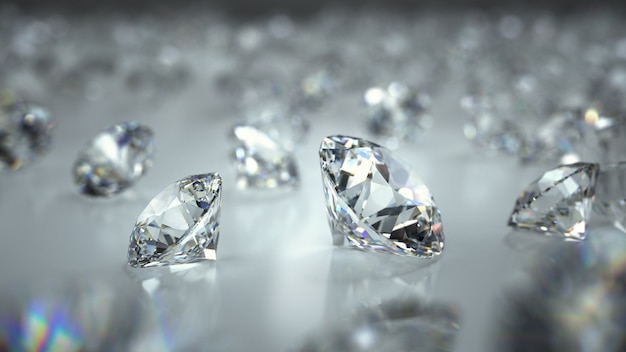Introduction
When it comes to choosing the perfect diamond, the decision often boils down to lab grown diamonds or mined diamonds. With the rise of sustainability and ethical concerns, more people are considering lab-grown options. But is one really better than the other? Let’s dive into the details!
What Are Lab-Grown Diamonds?
Lab-grown diamonds, also known as synthetic or cultured diamonds, are created in controlled environments using advanced technology. They have the same physical and chemical properties as mined diamonds but are produced in a fraction of the time.
The Process of Creating Lab-Grown Diamonds
There are two primary methods for creating lab-grown diamonds: High Pressure High Temperature (HPHT) and Chemical Vapor Deposition (CVD). HPHT mimics the natural process by applying intense heat and pressure, while CVD grows diamonds layer by layer from a gas.
Types of Lab-Grown Diamonds
Lab-grown diamonds come in various forms, including those designed for jewelry and industrial applications. You can find them in every cut and color, making them versatile and accessible.
What Are Mined Diamonds?
Mined diamonds are natural stones formed over millions of years deep within the Earth’s mantle. The process of extraction involves mining operations that can significantly impact the environment.
The Mining Process
Mined diamonds are extracted through open-pit mining, underground mining, or alluvial mining. Each method has its own environmental footprint, raising concerns about sustainability.
Types of Mined Diamonds
Like lab-grown diamonds, mined diamonds can be found in various colors, shapes, and sizes. However, each stone is unique, which can make them more appealing to some buyers.
Comparing Quality: Lab-Grown vs. Mined Diamonds
When discussing diamonds, quality is paramount. Both lab-grown and mined diamonds are graded on the 4Cs: Cut, Color, Clarity, and Carat weight.
The 4Cs of Diamonds: Cut, Color, Clarity, Carat
Lab-grown diamonds can match or even surpass mined diamonds in quality, depending on the technology used. Moreover, they are often free from inclusions and imperfections, making them a popular choice for those seeking clarity.
Ethical Considerations
One of the primary reasons people turn to lab-grown diamonds is ethical concerns surrounding mined diamonds. Let’s explore these issues further.
Environmental Impact
Mined diamonds can contribute to habitat destruction and significant carbon emissions. In contrast, lab-grown diamonds have a considerably lower environmental impact.
Human Rights Issues
The diamond mining industry has been associated with various human rights violations, including child labor and unsafe working conditions. Lab-grown diamonds offer a transparent alternative, eliminating these ethical concerns.
Cost Analysis: Lab-Grown vs. Mined Diamonds
Another crucial factor is cost. Lab-grown diamonds tend to be more affordable than their mined counterparts, which can be a significant advantage for budget-conscious buyers.
Price Comparison
On average, lab-grown diamonds can be 20-40% less expensive than mined diamonds. This price difference allows consumers to invest in larger or higher-quality stones without breaking the bank.
Consumer Preferences: Trends and Insights
As awareness of sustainability and ethical issues grows, so does the market for lab made diamonds.
Market Growth of Lab-Grown Diamonds
Recent trends indicate a surge in demand for lab-grown diamonds, particularly among millennials and Gen Z consumers who prioritize ethical purchasing. This shift is reshaping the jewelry market, making lab-grown diamonds a formidable contender.
Conclusion: Making the Right Choice
In the end, choosing between lab-grown diamonds and mined diamonds boils down to personal preferences and values. If you prioritize sustainability and ethics, lab-grown diamonds may be your best bet. However, if you appreciate the uniqueness and history of natural stones, mined diamonds could be the way to go. Whichever you choose, both options offer beauty and brilliance that can last a lifetime.

